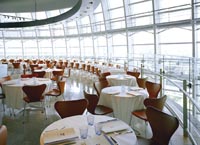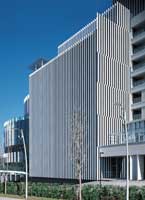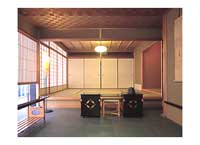|
ROPPONGI, AN ART LOVER'S PARADISE
Museums Attract Daytime Visitors to Nightlife District
|
|
Roppongi is a fashionable district in Tokyo long known for its vigorous nightlife and its popularity as a hangout for celebrities and foreigners. Although it is now home to many modern high-rises and office buildings, it remains a place where people go to have fun—and not just at night. The area draws large numbers of people in the daytime and on weekends, many of whom come to visit the impressive array of art galleries that have congregated there in recent years. Indeed, Roppongi has acquired a new identity as an art district. Massive Exhibition Space Roppongi has continued to thrive and draw interest in recent years by remaking itself, most recently through the creation of multipurpose complexes that include selected high-class shops and restaurants. Roppongi Hills opened its doors in April, 2003, and the people that live in its stylish condominiums have been dubbed the Hills zoku (Hills tribe). Another such complex, Tokyo Midtown, opened for business in March, 2007. Roppongi is also becoming known as a place to enjoy art. The National Art Center, Tokyo(NACT), which opened in January 2007, is a new type of museum in that it has no permanent collection. It makes use of its 14,000 square meters of exhibition space—the largest in Japan—to host various special exhibitions, to collect and display information on art, and to promote art education. The NACT is also home to a brasserie run by renowned French chef Paul Bocuse, the first such outlet he has ever opened outside of France, making the museum a feast for the taste buds as well as the eyes. The Suntory Museum of Art, which boasts a history of more than 40 years, moved to Roppongi and reopened with a fresh new look in March 2007. While remaining faithful to its core ideal of "Art within life," since the move, the museum has also set forth a new operating principle exclaiming "Art revisited, beauty revealed." There is also a tea ceremony room inside the museum. Triangular Synergy These three unique art museums have been referred to as the "Roppongi art triangle," and they have teamed up on various occasions with the aim of energizing art and cultural activities in the area as a whole. For example, once a ticket is stubbed to enter one of the three museums, a visitor will get a discount on admission fee at the other two. These efforts have given rise to a synergistic effect. The National Art Center, Tokyo, has drawn more than 3 million visitors to its exhibitions in the year since it opened, and the other museums are experiencing increased attendance, as well. With visitors now able to spend an entire day strolling around Roppongi appreciating a wide variety of artworks, the district has cemented its reputation as a world-class center for artistic endeavors. (September 2008) |
Copyright (C)2008 Web Japan. Edited by Japan Echo Inc. based on domestic Japanese news sources. Articles presented here are offered for reference purposes and do not necessarily represent the policy or views of the Japanese Government.


